
- Source: STIR
- Author: MEGHNA MEHTA
- Date: FEBRUARY 18, 2020
- Format: ONLINE
Los Angeles Water School by Oscar Tuazon
traces how water connects communities
In an interview with STIR, the Los Angeles-based artist talks about his installation that was conceived as a building on the move, and focuses on the preservation of Great Lakes.
Artist Oscar Tuazon likes to engage different methods of construction – he frequently uses wood, concrete, glass, steel, and piping as materials to create structures and installations. His works have roots in minimalism, conceptualism, architecture and have a direct relationship with both the site in which they are presented, as well as with their viewer, often through physical engagement and activism.
Based in Los Angeles, United States, Tuazon has exhibited widely across the world; his Los Angeles Water School (LAWS) and the Zome installations are a platform to engage people in dialogue concerning environment and water. His works showcased at the MSU Broad Museum, Michigan State University (2019); in the Place Vendôme, Paris (2017); and at the Art Basel (2016) created not only an artistic fervour towards communal spaces but also produced an ecologically and environmentally-sensitive architectural product.
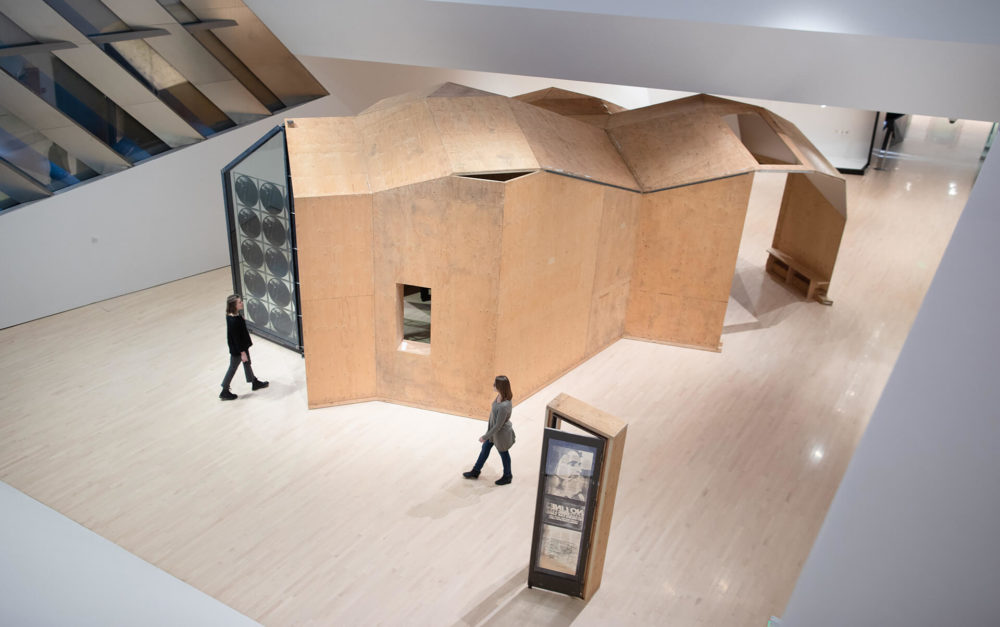
Oscar Tuazon: Water School displayed at MSU Broad Museum at the Michigan State University, 2019. Image Credit: Eat Pomegranate Photography.
One of Tuazon’s most ambitious projects as part of LAWS is an architectural installation, titled Zome Alloy, a hollowed wooden structure consisting of 11 traversable polyhedral units, or zomes. Three zomes have been erected outdoors in Los Angeles, where they function as the artist’s studio, and two zomes act as shelter at Camp Makwa in Minnesota, an active protest site against a proposed oil pipeline. Tuazon refers to each zome site as a ‘Water School’, as the structure becomes a hub for discussion and education about the environment in which it is located. The installation is modelled after the Zome Home, a solar powered house in Albuquerque, New Mexico, designed by innovators Steve and Holly Baer. The zome’s modular structure affords a flexibility that allows Tuazon to replicate, modify, and adapt his work according to renewed contexts. After its public presentation during Art Basel 2016 in the city’s Messeplatz, Tuazon’s Zome Alloy was broken up into clusters and installed at different locations in the United States. A permanent, public ‘Water School’ is also being planned in Nevada to bring art and awareness towards water.
The Water School has grown out of thinking about what role art making can play in building community and culture. – Oscar Tuazon
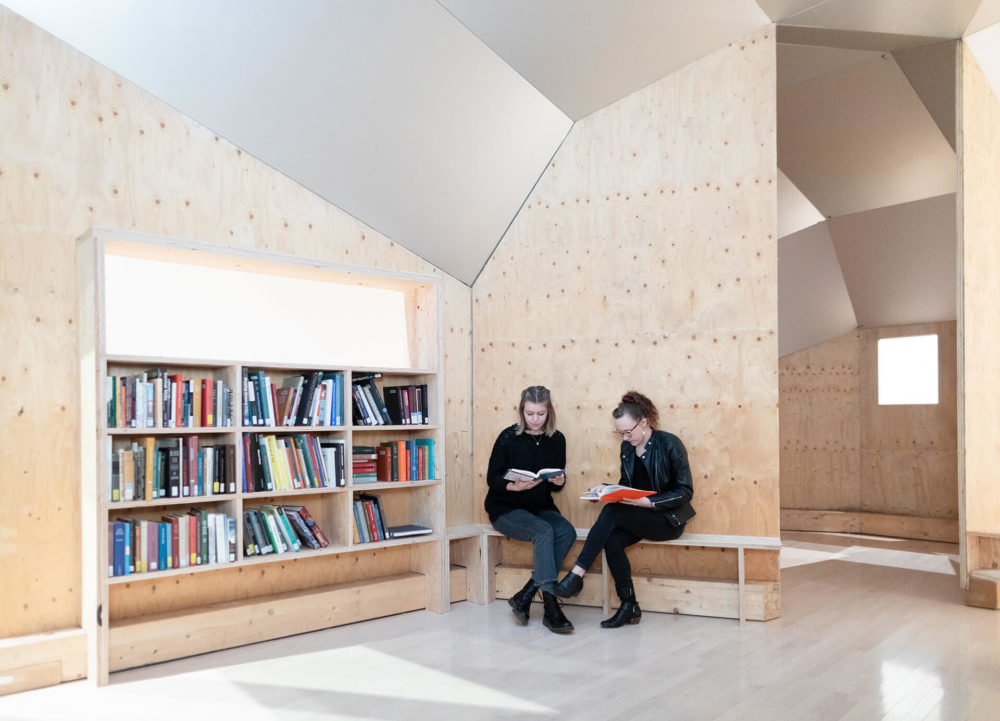
Oscar Tuazon: Water School at the Michigan State University emphasised the view that water connects people and their surroundings. Image Credit: Eat Pomegranate Photography.
Here, STIR discusses with Tuazon the idea behind the Los Angeles Water School and the Zome Alloy installations to understand the intentions and awareness he is attempting to create towards water, learning, and architecture and art.
Meghna Mehta (MM): What inspired you to initiate and create the LAWS?
Oscar Tuazon (OT): Oceti Sakowin (the original North American Sioux tribe). The first time I experienced the Water School was in the camps at Standing Rock, where indigenous people came together to protect water, and in the process taught us the value of water as a living being, the substance that connects us all. Indigenous teachings around water emphasise on connecting to water through oral traditions native to the places we live in, so when I came back to Los Angeles, I wanted to get to know the water I drink. Los Angeles Water School started by listening to Tongva and Chumash elders, learning the names of our rivers in their original language.
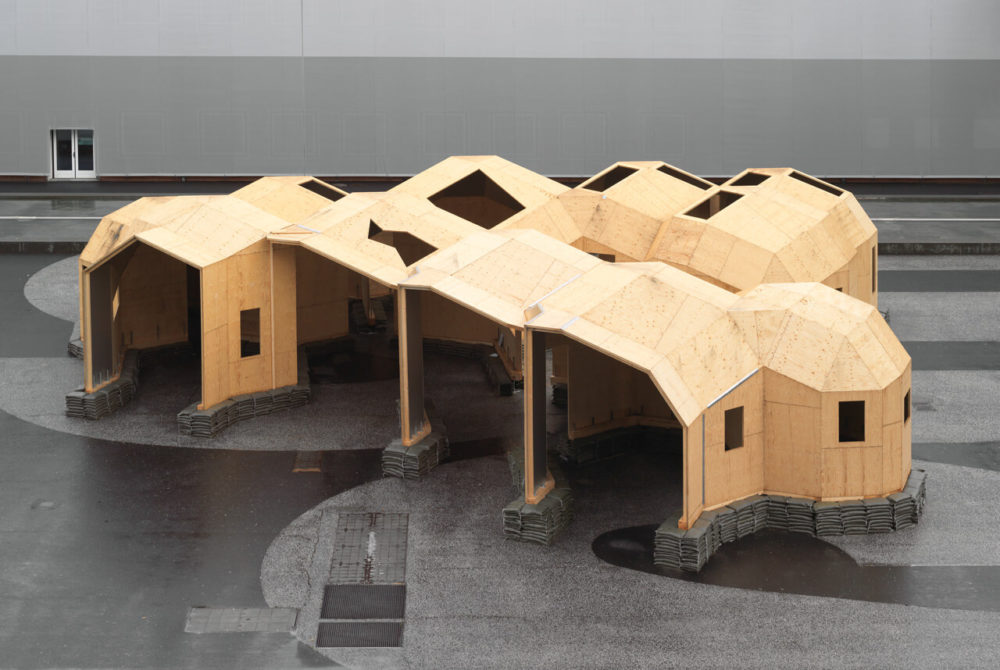
Zome Alloy at the Art Basel in 2016 is a flat-pack installation that can be easily transported. Image Credit: Art Basel.
MM: What is the kind of dialogue that LAWS has generated over the years? Has there been any significant change/impact that the project has been able to bring since its inception?
OT: We have been holding events and conversations around local water issues that have been incredibly important as our city struggles to confront the reality of climate chaos, permanent draught, and cyclical wildfires.
The Mulholland aqueduct, for example, where much of LA’s water comes from, is an example of short-term planning that has created catastrophic unintended consequences. LAWS is an artistic project first, which is its strength; it allows us to make these connections in the form of an exhibition, or a dance.
There are thousands of years of history along these waterways, but unfortunately we have been very short-sighted in our historical understanding of water, using a settler colonial framework that only goes back a couple hundred years at most. – Oscar Tuazon
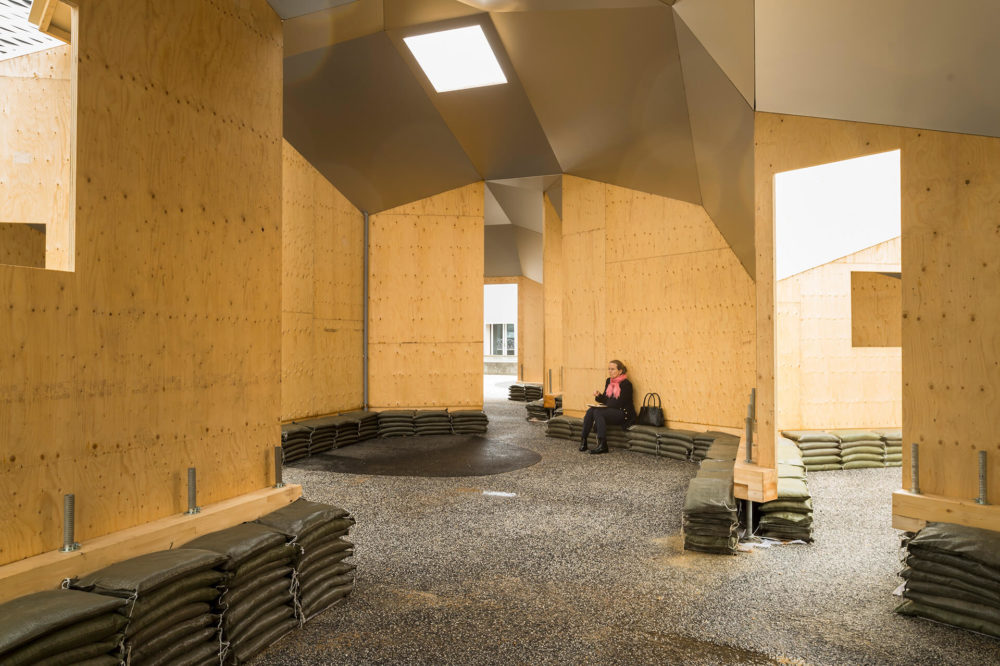
Zome Alloy, a lightweight structural wood shell, at the Art Basel engaged the visitors in the question of what a house can be. Image Credit: Art Basel.
MM: The project highlights a unique relationship between water and infrastructure. In what ways does the design of the project speak of this relationship?
OT: One thing we have learnt about the scale of infrastructural projects such as the Mulholland aqueduct 100 years ago, or the Dakota Access Pipeline (DAPL) today, is that these massive projects affect communities over vast geographic distances. So, the Water School was conceived as a building on the move, a mobile architecture that can occupy multiple sites simultaneously, to engage with water in its own language, which is movement. So the Water School has moved through East Lansing, Michigan and Chicago, Illinois, to engage with the water stories along the Great Lakes; on to White Earth, Minnesota at the headwaters of the Mississippi River; and next to the high desert of the Great Basin.
Water resources in all of these places are under threat from infrastructure projects, and this is something that an artwork can do: help us see water. – Oscar Tuazon
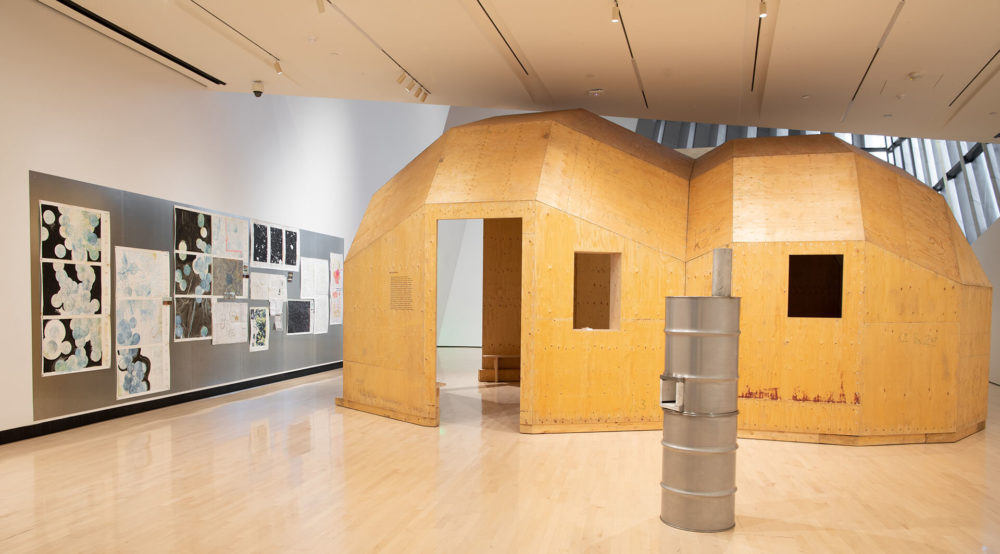
The Water School at MSU Broad Museum, Michigan State University, became an artistic installation and a cultural hub for the campus. Image Credit: Eat Pomegranate Photography.
MM: In terms of the architecture of the space, why did you think a similar set up like the Zome House would be apt?
OT: The Zome House is a building designed around water— it uses a wall-filled facade to passively climatise the interior— so this is already a very pedagogical structure, a building that teaches its occupants.
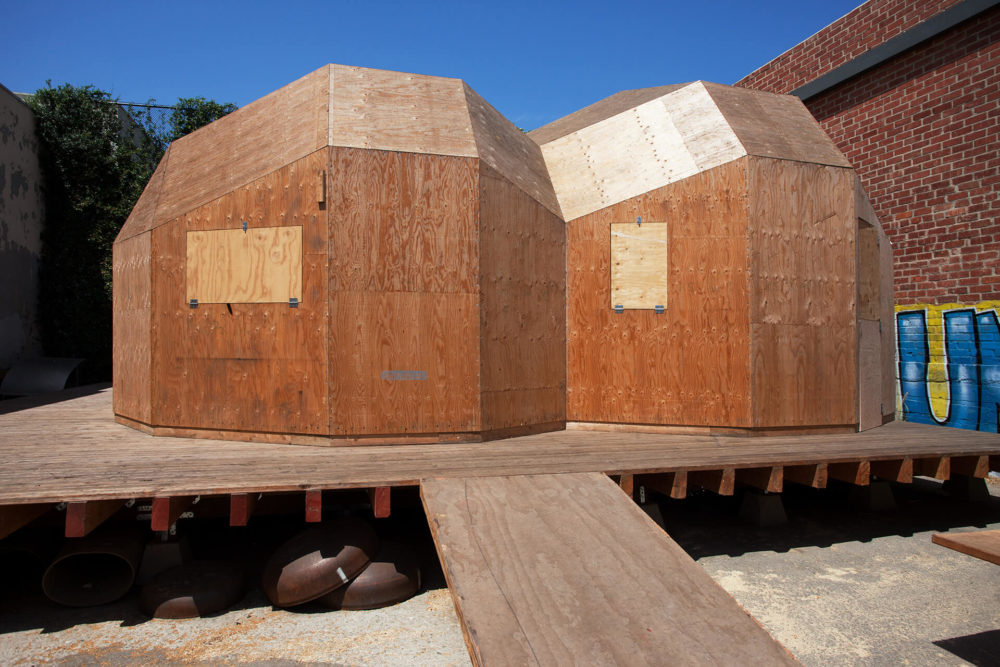
A functional artwork, Los Angeles Water School (LAWS) was created out of natural and industrial materials. Image Credit: Jeremy Jansen.
MM: In what ways was the design of the original Zome House modified in order to build an atmosphere suitable for LAWS?
OT: First we installed a rainwater collection tank in the centre of the structure, and the tank became a kind of icon around which we held our conversations and events. Next, we have been making windows, printing images onto glass as a way to display the hydrogeology of the various sites on the skin of the building. And we are always building the library, a school begins with books.
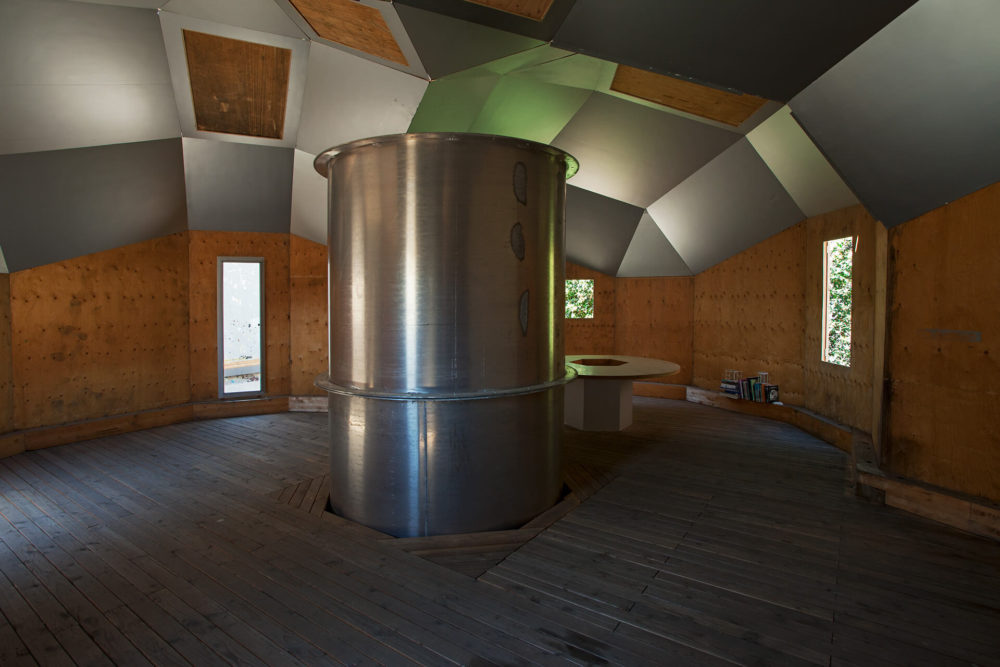
The structural system also uses glass, aluminium, steel and vinyl as its material. Image Credit: Jeremy Jansen.
MM: Could you describe the construction of Zome Alloy and the principle behind it? How does the design engage the user?
OT: Zome geometry is a flexible system for irregular surface modelling, like an analogue precursor to 3D modelling NURBS software such as Rhino, that creates space frames using a sequence of triangles, rectangles, and parallelograms. It is really a very intuitive system that doesn’t require math so much as an understanding of patterns.
MM: The project is meant to be a ‘functional artwork’. How would you describe the spatial syntax of the project with respect to the programme?
OT: The spaces produced by Zome geometry are round, so they encourage circular meetings where everyone is facing the centre, seeing one another, and that has been a key aspect of transforming the building from its original use as a single family home into a kind of public space.
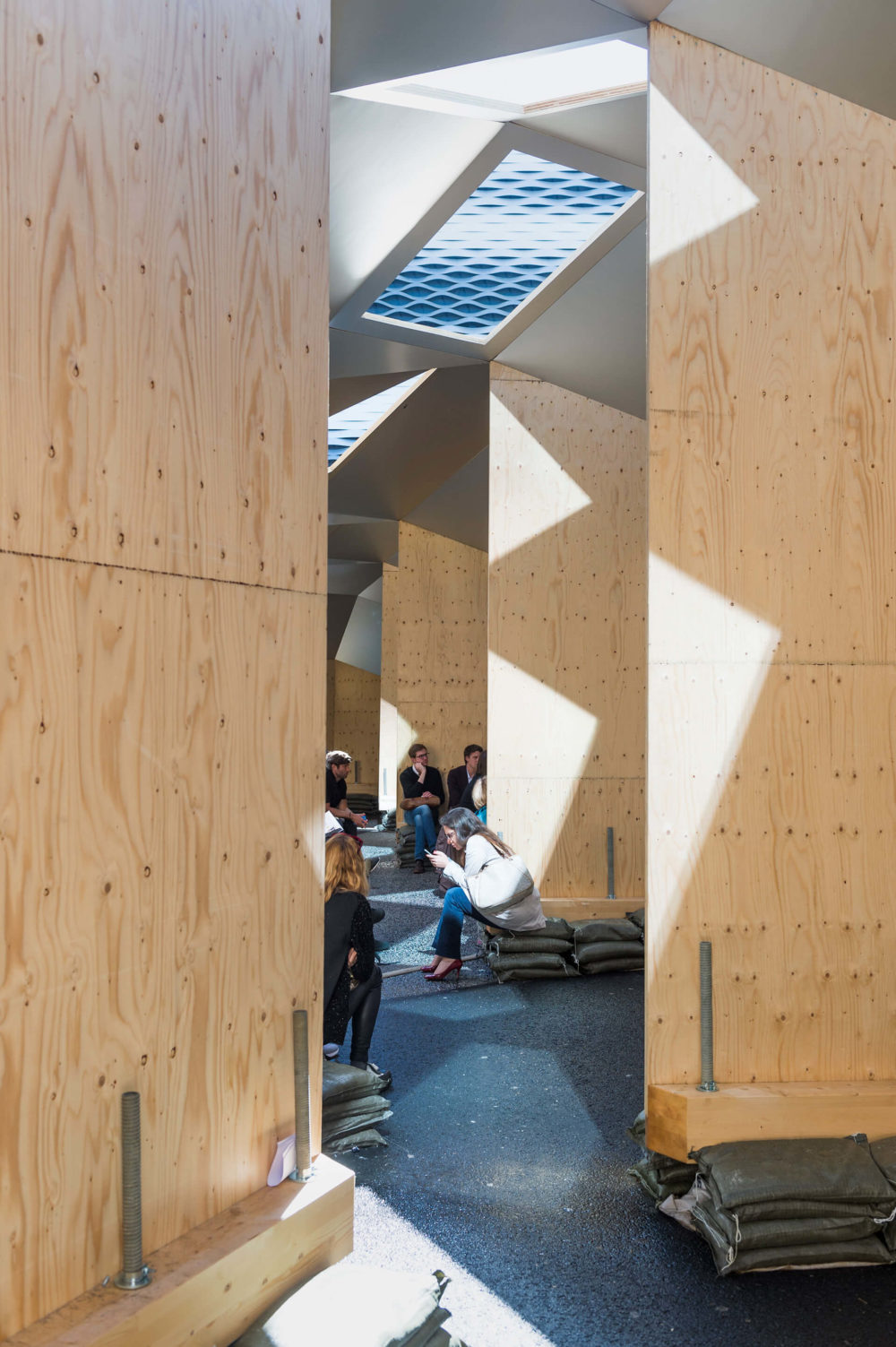
Zome Alloy, installed at the Art Basel in 2016, was a demountable structure partially clad in aluminium. Image Credit: Art Basel.
MM: How do you think the configuration and structure of the Zome Alloy affects the activities of the programme?
OT: Because this is a modular system, it can be easily adapted to various climactic and site conditions. The original Zome House is made up of a cluster of 11 Zomes, and I have broken the larger building down into its constituent modules so that it can engage with multiple sites. I am interested in the spaces between these locations, and how to establish connections and community that transcend a single site.
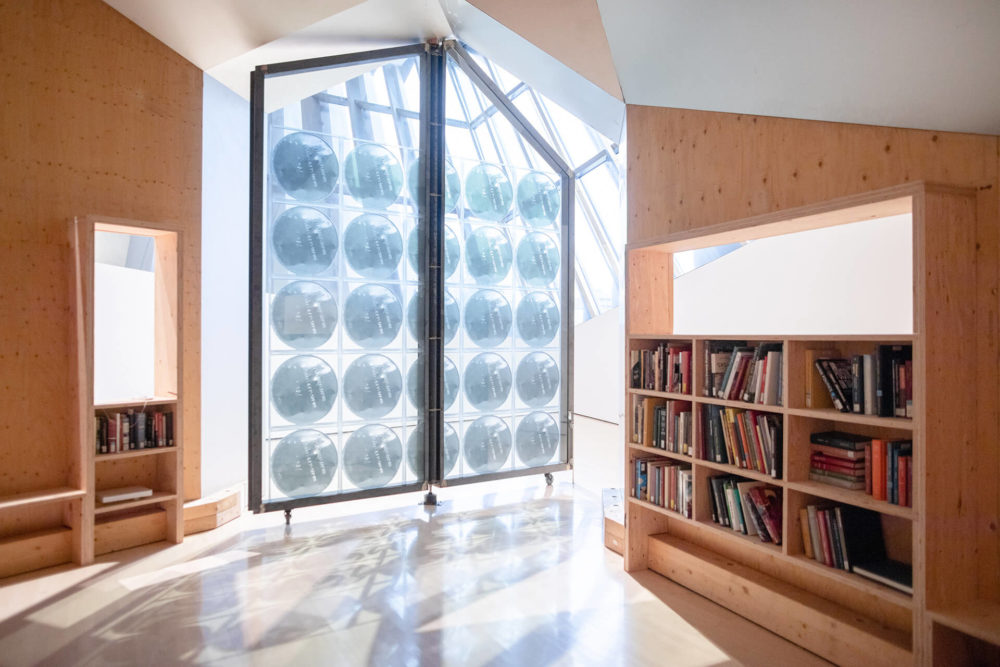
Oscar Tuazon: Water School became a space for learning much-like a library. Image Credit: Eat Pomegranate Photography.
MM: Ever since it was built, how and where all has the structure been moved? What is the structural system involved?
OT: The structure was first build and exhibited in Basel, Switzerland before moving to Los Angeles; Michigan State University; the Chicago Architecture Biennial; White Earth, Minnesota; Seattle, Washington; and Cedar Spring, Nevada.
The system lends itself to mobility, and I adapted the original design so that it can disassemble and pack flat into shipping containers.
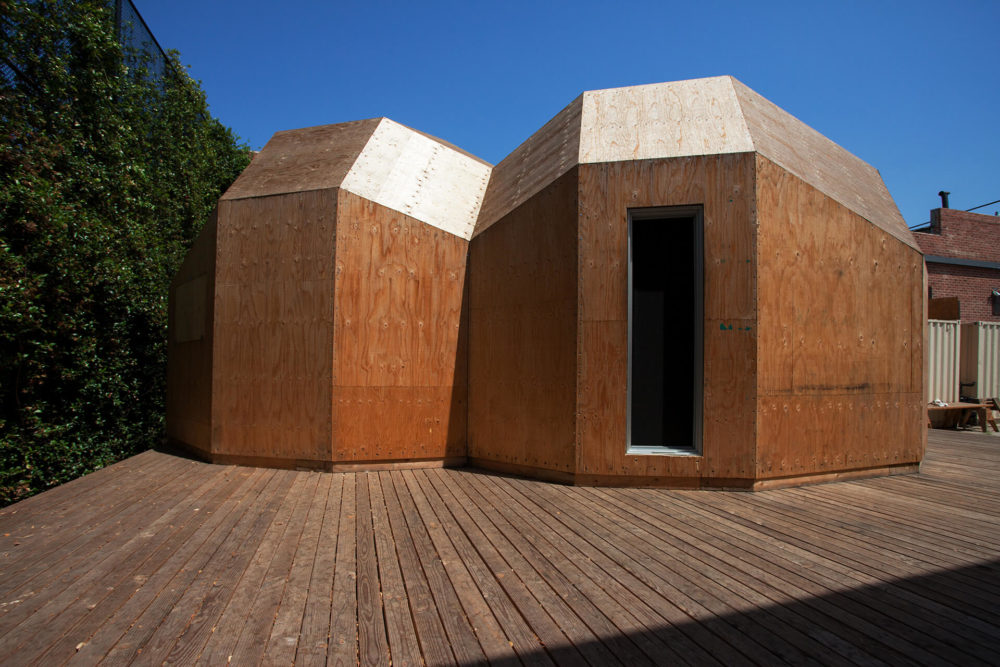
The Los Angeles Water School (LAWS), 2018 was intended to be an eco-friendly and environmentally sensitive product. Image Credit: Jeremy Jansen.
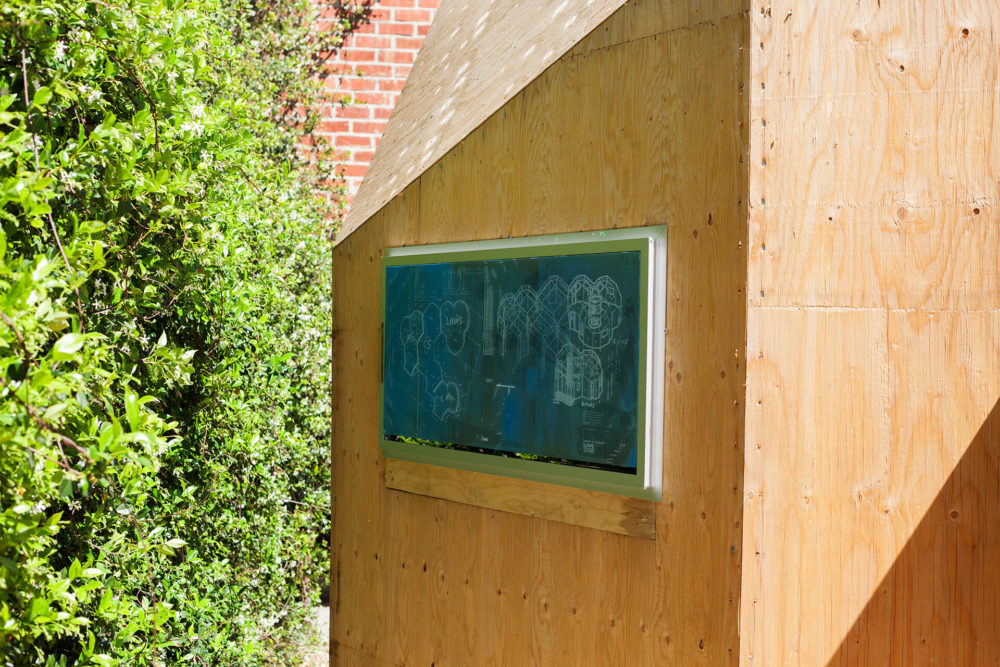
The Los Angeles Water School (LAWS), 2018 was intended to be an eco-friendly and environmentally sensitive product. Image Credit: Jeremy Jansen.
MM: What lies in the future for the LAWS?
OT: We have a series of events planned in Los Angeles this spring that will bring some of these conversations to a larger audience. At the same time, the more permanent location of the Water School in Cedar Spring, Nevada, is progressing gradually ahead, and we hope to break ground there in the next year. It is a remote location for a school, hours drive from the nearest town, that presents a range of exciting logistical and conceptual challenges.

